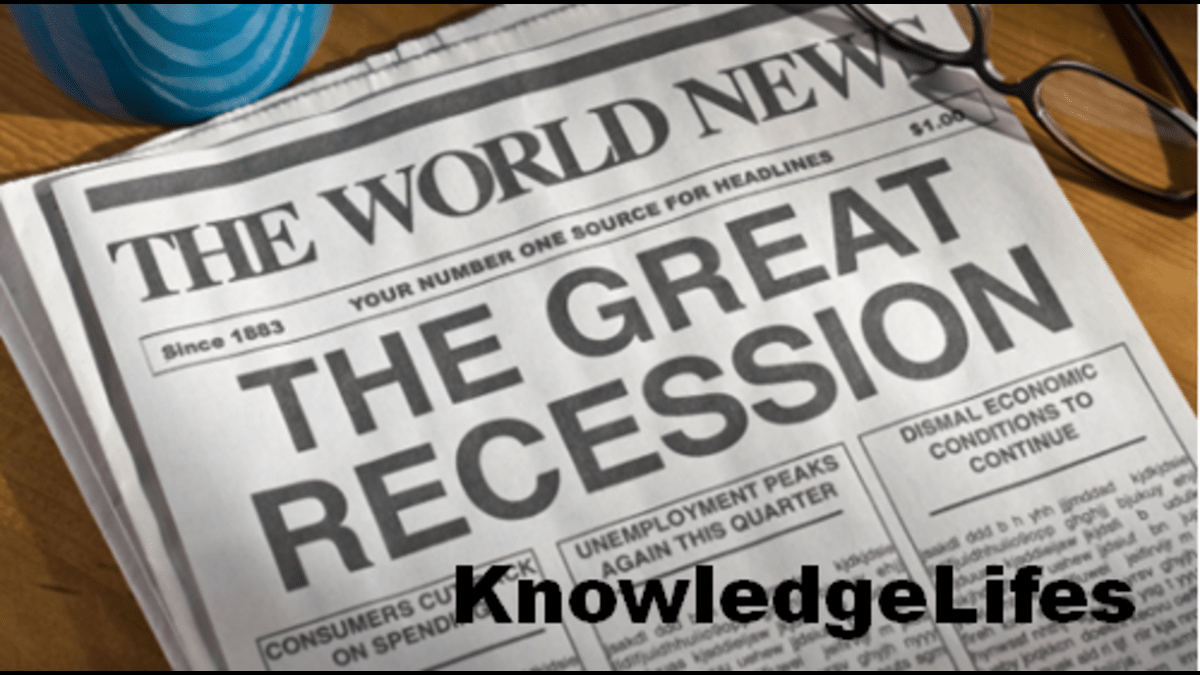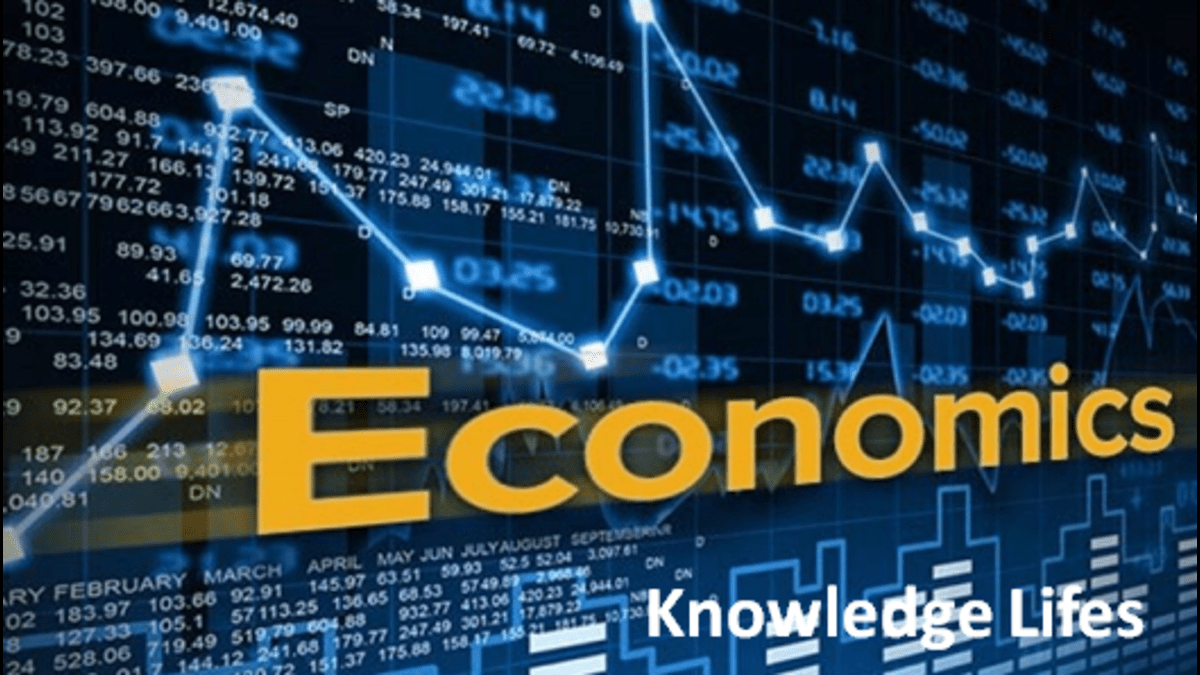It’s been a tumultuous few years for the global economy between the shock of the pandemic and the war in Ukraine analysts had been telling us to brace for a Great Recession but this hasn’t come to pass and the United States in particular has been doing far better than expected outperforming most other major economies last year and that is despite a slew of interest rate hopes to find out why this is happening.
Pandemic Economic Impact
Usually, what happens when you raise interest rates is that growth slows down. It’s the price you pay for taming inflation. But the US has somehow managed to get the best of both worlds: lower inflation and higher growth. What’s going on, right? Um, a lot of it goes back to what happened over the course of the pandemic. Um, we have to start with one basic idea about the pandemic: as tragic as the pandemic was from a human circumstance, it wasn’t that big of a deal from an economic circumstance. I appreciate that that is a little bit of a controversial view. We heard a lot of stories about how the pandemic was going to set off a depression in the United States when, really, honestly, we’ve never seen a pandemic create a depression before. I don’t know why so many forecasters had this particular point of view. Be that as it may, uh, that of course, Panic Point caused Congress to behave in ways that really we’ve never seen before. Um, our nation did $6 trillion of quantitative easing. Um, that’s $50,000 for every American household, to give you some sense of it.
Monetary Distribution Approach
Unlike, say, the European Union, where most of the quantitative easing went into the banking system to stabilize the financial markets, in the United States, this money was fire-hosed across American households in the form of all sorts of programs that just created a huge amount of cash reserve for your standard American household. For example, prior to the pandemic, all American households were sitting on about a trillion dollars in cash liquidity—just money sitting in their checking and savings accounts. Right now.
Americans are still hanging on to $4 trillion cash liquidity, so this enormous surge in money has obviously supercharged consumer demand. That’s what’s kept the US economy rocking and rolling, but it’s also created, of course, a huge uh cash cushion for those. Rising interest rates you were just discussing. Why haven’t interest rates had a big impact on consumers and consumer spending? Well, America can still have tons of money that they can use to pay down their debt if they need to or use it to fund expenditures. And of course, there’s one other little thing you got to keep in mind in the United States.
American Homeownership Stability
We have this wonderful product for American homeowners. It’s called the 30-year fixed-rate mortgage. You know, uh, most American debt is in the form of one of these 30-year fixed-rate mortgages, and despite all the increase in interest rates, uh, your average mortgage in the United States is still charging about 4%, a little less than 4% right now because they’re locked into those ultra-low rates that they got when they refinanced back in 2020 and 2021. So, the excess cash, the fact that they’ve been inoculated from rising interest rates, has all meant that the consumer is alive and well in the United States, and they’re exactly what continues to push this economy forward. Okay, so things are working well in the short term, but all of that stimulus, um, is very expensive. Should we be worried about the sustainability of debt then? Oh, absolutely. I mean, look, it’s not just what happened over the course of the pandemic.
Federal Deficit Pressure
It’s what’s going on even now. Our federal government is still running a deficit of about $1.8 trillion per year. That number is going to continue to increase just because of the rising cost of carrying all that existing debt. You know, while American households are inoculated from rising interest rates, the American government is not. The half-life in US Government debt is about five years. Every five years, half of it has to be refinanced, and now it’s going to be refinanced at substantially higher interest rates. That’s going to continue to put more and more pressure on the federal government. The real question is not, is this sustainable? Of course, it’s not. The question is when will the bond markets finally respond to it.
Bond Market Dilemma
Because the bond markets really have been operating in a world of “hear no evil, see no evil, speak no evil,” they don’t want to acknowledge the US Federal deficit problem. In part, because in many ways, we’re the biggest game in town. If you want to have a safe security, the US is where you go for at this particular point in time, and nobody wants to upset that apple cart. Where else do you go? Yeah, so we have consumers feeling good, we have bond markets perhaps not yet facing reality. The stock market, in general, is doing very well, but there has been a lot of criticism of companies not passing on gains to their workers, choosing to buy back stock to offer their shareholders returns, for example, instead of say, increasing wages. What is your position on that? Um, look, we’re mixing apples and oranges here. There’s no doubt that the stock market’s at an all-time high level, but corporate profits are not. In fact, corporate profits really topped out a little over a year ago. They’ve been flat over the course of the last year, in large part because there already is a big transfer of income from corporate entities to the American worker.
Wage Growth Concerns
“Over the last year and a half, wages have been rising faster than corporate incomes. This is one of the reasons I’m so worried about the stock market. The big increases we’ve seen in prices, particularly over the last six or seven months, makes no sense when you consider the underlying fundamentals. That is to say, rising interest rates and flat overall corporate profits. This is another one of my worry points about the US economy. It’s not the health of the consumer, it’s the health of the equity market. Interesting stuff because I remember you saying in an interview about a year ago that you were actually more worried about what happens when inflation comes down, and we’re at around 3% now. Is that a good number? Too high? Too low? It’s fine for me. It’s not fine for the Federal Reserve. They seem fixated on this 2% number. And really, the Federal Reserve, I think, has acted in odd ways over the course of the last few years. They over respond to the pandemic and, candidly.”
Concerns Over Inflation Response
They over-responded to inflation. They aren’t causing problems for the American consumer, as I already noted, but they have caused a lot of problems, obviously, for American banks. And of course, the real estate market, particularly on the commercial real estate side, because the Federal Reserve is not backing off; those long-run rates are remaining high. That’s going to continue to create problems in some of those financial markets, particularly, again, commercial real estate. But none of this will have an impact on the consumer. And that’s ultimately one of the interesting points about the US economy: we’re getting reoriented with high-interest rates. The good news is the pain of that process is being masked, at some level, by the strength of the consumer. Am I understanding you right, though, that you’re quite worried about the longer-term effects of these policies? Oh, absolutely. Look, the government’s deficit situation is clearly not sustainable.
Federal Reserve Concerns
I think the Federal Reserve has really done a disservice to this nation. Um, by setting off the wave of inflation because of their overreaction to the pandemic. But B by setting off what smells like a financial bubble. Look, the stock market, the P/E ratio for the stock market right now in the US is almost 35 to 1. That makes no sense given where interest rates are. Look at Bitcoin. Bitcoin has hit $75,000. I tell my clients all the time, is there a fundamental value to cryptocurrency? Of course, there is. It’s zero. So when I see an asset that has a value of zero running at $75,000, I do worry. But it’s not about the health of the economy right now. If anything, I feel like the US economy is still running too hot. You have too much consumer demand that’s being pushed by really artificially high asset values. This will not end well. Now, when it ends, that could be four or five years from now, but the trends as they exist right now are dangerous and they’re not going to, of course, have a happy ending. Uh, but will remain to be seen to see how this thing shakes out. And just to clarify, the P/E ratio is the price-to-earnings ratio. I also want to talk about energy. The US has become a major exporter of LNG and unlike Europe.
Energy Resilience
It wasn’t badly hit on an energy front by the war in Ukraine. How much would you say has energy security contributed to this economic resilience? Oh, absolutely, it has. For a number of reasons, as the case may be. Yes, as noted, oil production in the United States is through the roof right now. Right now, the United States is the biggest oil producer in the world. This all has to do with the enormous changes, particularly in fracking technology we’ve seen in our economy over the course of the last couple of decades. And as a result of that, now when oil prices go up, for the most part, what it means is that most Americans are paying more money at the pump, but they’re paying it to people in Texas. Keeping that money internal means we benefit from the benefits and the costs of, of course, this higher energy cost situation. And as a result, doesn’t have a net impact on things. And to your point, the United States has almost, has, if you will, an energy balance while we still import a little bit of crude.
Energy Exports and Inflation Concerns
We are actually have a net exports position in more distilled products, whether it’s liquefied natural gas or even many different kinds of petroleum products. So, United States from an energy perspective is in a great place, but obviously not terribly good for our global goals having to do with warming, absolutely. And on that, I want to talk about the Inflation Reduction Act because a big part of that was to promote clean energy program. There have been massive spending programs introduced as part of that act, billions have been pumped into the economy. It does seem to be bearing fruit so far, but how long do you think we can expect this effect to last? Well, again, they cannot continue to borrow this money every single year. A 1.8 trillion is too large, that number is going to go up because of obligations in Social Security, Medicare, and of course the rise in cost of carrying the existing debt. This is not a sustainable situation, they’re going to have to back off.
Congressional Dysfunction and Public Anger
The only question is, will Congress be able to get a grip on things and start doing it in a calm way, or are they going to wait till this thing turns into a crisis and do it, of course, in some sort of painful way? To me, at this point in time, you have to feel like it’s the latter. Listen, here’s the reality: in the United States, the economy is fine, but people are not. People in the United States are upset, they’re angry. And honestly, it’s not the economy that’s causing it, but you see all that anger in terms of this ferocious election we’re moving into right now. The sides are bitterly divided, there’s very little in the way of any kind of cohesive conversation within Congress itself, and it’s hard to see these folks doing anything productive right now. I mean, they can’t even get a basic border bill passed, despite the fact that both the Democrats and Republicans seem to want more security at the border. This is the place. The United States in the story this year is not the economy. It’s, it’s the anger. And, and that anger is preventing us from doing things that need to be done right now. That, that is where I start really worrying about where this economy is going, where this country is going. But do you think you can really completely divorce public anger from what’s going on in the economy? I mean, there is massive inequality in the United States. Actually, for the last decade, both wealth inequality and income inequality have been falling. Again, this is, this is one of these little secrets that no one seems to want to acknowledge. We have good data from the Survey of Consumer Finances.
Changing Economic Narratives
Over the last decade, the biggest increases in net worth for the bottom 50%. Over the course of the last decade, the bottom 50% of workers have seen more earnings growth than the top 50%. Yes, inequality is still too high, but it is going down because of our labor shortage problem. We’re moving in the right direction. This is not a problem that’s getting worse. It’s getting better, and yet again, that doesn’t seem to be part of that public story. I acknowledge that the narrative is something different, but don’t confuse the narrative with our economic realities. The ‘whys’ are different things. I do want to talk more about the labor market because we’re seeing a couple of really interesting trends there. The labor force, in general, is getting larger, thanks in large part to rising immigration. At the same time, productivity is increasing.
Labor Shortage and Technological Advancements
So are workers doubling down, or are machines picking up the slack? Um, well, actually, I got to tell you, our labor force growth has been poultry over the last five years. It has picked up a bit, there’s no doubt about it. Some of it is driven by immigration, but we need a lot more. Look, we’ve had multiple decades of declining birth rates. Immigration has not filled in the slack, and the net result of that is the United States is critically short of people right now, particularly of course in places like California which won’t build enough housing or in the Northern parts where, of course, people are moving out. They’re moving to warmer climates in the South and the West.
The net result of this, of course, is we do need more immigrants. We’re not fixing that problem. We’re not fixing our immigration system. Go back to this ridiculous political anger that’s preventing us from doing basic things. Now you’re right behind that, we do have all sorts of technological changes. For example, the new promises artificial intelligence. Now I think as with all these new tech things, more often than not, the promises of this new technology are far beyond what is going to deliver. But again, in this day and age, boy, we need that Capital deepening. It’s a good thing we have all sorts of wonderful computer technology to make up for the fact.



